
Saint-Valery
sur-Somme
|
This page is dedicated to Annie and Guy, our wonderful hosts during a marvellous weekend. Thank you very much!
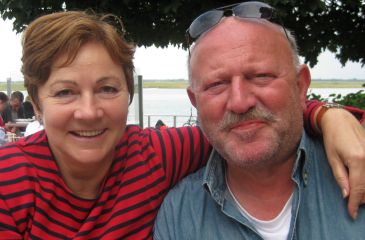 |
Probably you have never heard of St. Valery. Maybe you are acquainted with the Somme, a river in Northern France. St. Valery is a village, a little short of three thousand inhabitants, at the estuary of the Somme, where the tidal waves restructure the landscape every few hours.
And indeed it is the tide, that is the cause for one of St. Valery's specialities. It is the "pre-salted lamb meat". Pre-salted? Is it then only a question of cooking? Not at all and far better. As the tide comes in, it flows over the marshes, leaving the salty water for the grass to take up. And the sheep eat that grass continuously, so that even their flesh is influenced. It has really quite a different taste and it is looking good, when served after skilful preparation.
Right - but that is a natural occurrence, which the locals take advantage of. Can there be anything else interesting in such a small place?
|
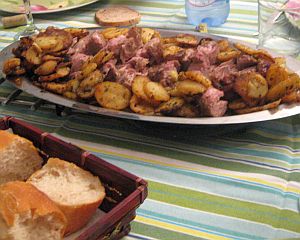 |
Yes sure! Actually that village is full of history. Already in prehistoric times people lived there. In 700 BC it is said that the Greek founded a settlement, called Leuconaus - but that has never been proven by archeologists. Two centuries later the Gauls ruled here until they were dwarfed by the Romans in 52 BC. Half a thousand years later, the Francs came to live here and mingled with the locals. Viking raids mixed some Northern blood into this melting pot of nations.
In 611 Gualaric the Monk (spelled even as Walaric or Valery) came to spread the Christian dogmas in the area. He lived as a hermit and became eventually St. Valery. He was buried on the spot, where today St. Valery's chapel stands. Today's chapel was rebuilt in 1878, though. Five years after his death in 622 his disciples founded an abbey and kept his remains as relics. The abbey was to be raided by Vikings many times in the 8th and 9th century and the relics of Gualaric were sold. In 981 Hugues Capet gained back the relics of Valery from Arnould de Flandres.
|
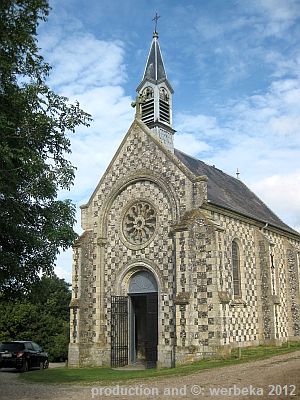 |
Now the village changed name from Leuconaus to St. Valery.
It is evident, that St. Valery had a castle already before the first millennium ended and a city wall as far back as in the 11th century. Of the castle there are only ruins remaining today - and they stand on private property. But the rest of the medieval part of the town is well kept and definitely worth a visit.
The St. Martin's-Church was built in the 15th century, but has ancestors, which date back until mid 12th century, when the old church was mentioned. It can easily be, that it was even older, though.
|
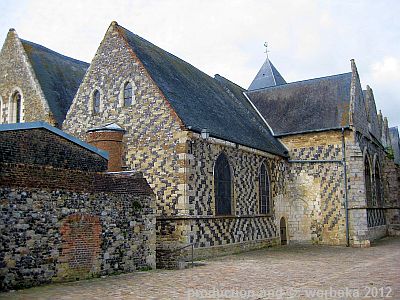 |
|
The 11th century saw more history evolve. In 1066, the Duke of Normandie, William, had to hide with his fleet in the harbour of St. Valery, as very bad weather made it impossible to cross the English Channel. However, when the wind was in his favour, he set over to England and Hastings, where he defeated King Harold and became the conqueror of England. He was crowned on Christmas Day the same year. The two big towers at the eastern end of the medieval city are called Guillaume's towers (Guillaume = William). It is said, that they stood there already, when William came to the town.
|
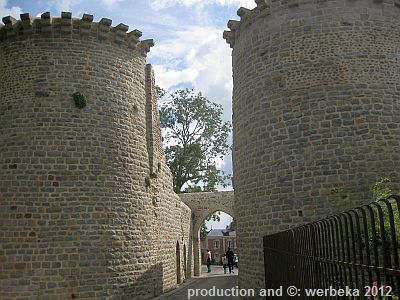 |
Therefore I suppose, that they were named in order to honour him. Today there is still a festival every first weekend in July, when St. Valery goes medieval, in order to remember its past glory.
In spite of its good fortifications, St. Valery was taken by Richard Lionheart. That English king is usually seen as a hero, but he was far from that. He rebelled against his father, and he had all the Jews of London killed. When he participated in the Third Crusade, his cruelties were famous - and he betrayed the other two main leaders of that crusade, King Philipp II of France and Duke Leopold of Austria.
There were periods of peace of course, but the Hundred Year War brought new troubles to St. Valery. In 1430 Jeanne d'Arc was brought to the city by the English, on the way to Rouen, where she was burnt on a stake. She spent one night in a cell, to the left of the port in the picture. In 1475, the French King Louis XI let the city burn down, as he didn't want to let it fall into the hands of the Burgundians, who fought on the side of the English.
|
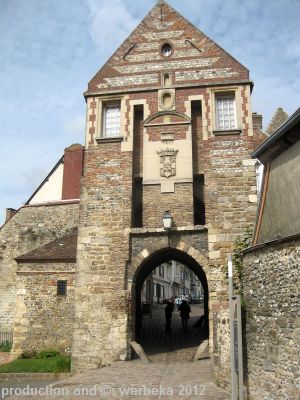 |
The Wars between Protestants and Catholics at the end of the 16th century brought new ruin to the town, before life became more steady in the 17th and 18th century. Now the town expanded downwards to the quayside. In one of the houses there, the famous science fiction author Jules Verne would be living eventually. Today the house (to the right) is a museum.
In the 18th century, two - at that time modern - shipyards were built and the harbour became important for commercial activities. St. Valery survived the French Revolution rather well and without any murdering from either side.
|
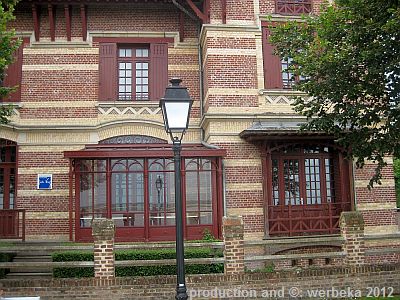 |
But there is more to that village than the medieval town and historical facts. To start with we have talked about the tide, the following pictures show you how much difference it makes.
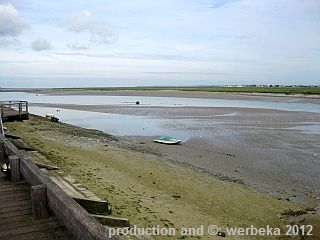 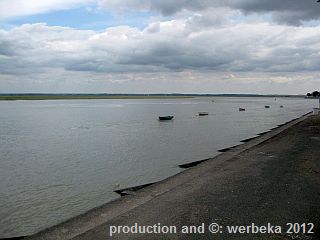
Look, where the steps begin at low tide ... with the flood coming in, the water has already reached them. As amazing is the speed with which the water comes and goes. The current is as quick as galloping horses.
Since 1858 there is a narrow gauge steam railway, that transports tourists all over the Bay of the Somme, even if the schedule is not too busy. The railway station has rather big dimensions ... On the other hand, St. Valery counts about thirty-five thousand tourists every year.
There is also the Picardy Museum, displaying more than 6000 artefacts from daily life in former times. Caring for the sick is another quality for St. Valery. Already in the 12th century a leper-house was built. From 1518 Dominican nuns took care of the sick and in 1666 Augustinian nuns took over.
|
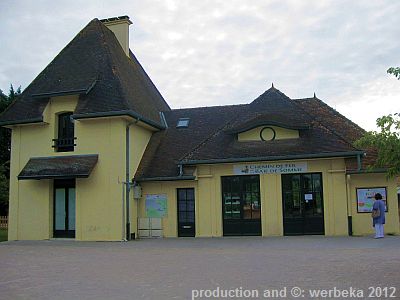 |
They also built the hospital, today still impressive by its size. It served as hospital for exactly 300 years.
Of course a harbour in a town like St. Valery was quite important. In the 18th century it had place for about 200 seagoing ships. But soon the harbour started to silt-up and at the beginning of the 20th century only small ships and yachts could make use of the harbour. There was a boat club founded in 1846, which in our days is running a yacht house, a bar and a restaurant. In today's Marina there are about 250 anchorages available.
|
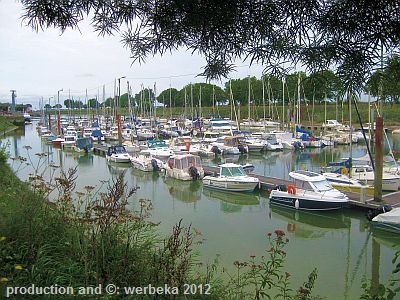 |
Another surprising thing is the silence, that you experience near the water. It is as if the sounds are carried away by the vast empty spaces. If you need a couple of days to ease your stress, or to take care of your soul, then I can only recommend a stay in this charming village.
© Bernhard Kauntz, Wolvertem, Belgium 2012
Back to  or to the or to the  of of 
last update: 5.9.2012 by webmaster@werbeka.com
|













